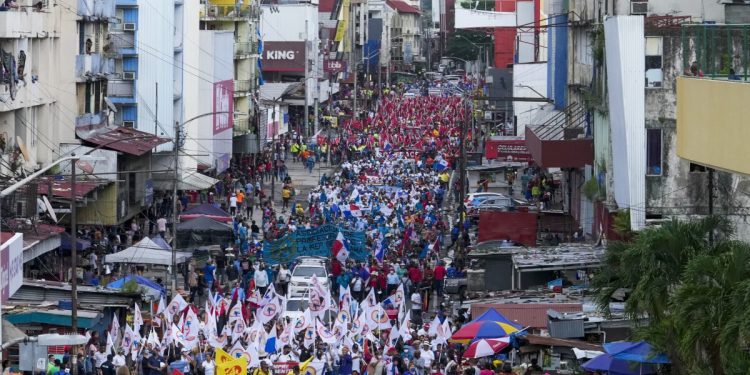NEWS CENTER – Thousands of Panamanian protesters have taken to the streets in recent weeks to demand that the government end the rising inflation and corruption.
President Laurentino Cortizo recently announced measures to cut fuel costs and cap the prices of basic foodstuffs, but protesters said they did not find the measures sufficient and would continue to demonstrate.
REQUESTS OF PROTESTERS
The most recent protests came as Panama struggled with an inflation rate of 4.2 percent in May; unemployment figures of about 10 percent and an almost 50 percent increase in fuel costs since January.
Teachers were the first group to demonstrate in early July, but since then other groups have joined them, including construction workers, students, and members of indigenous organisations.
Initially, protesters called for freezing and lowering fuel prices, capping food prices, and increasing the education budget, but the demands have since expanded to include a national debate to address political corruption and discuss larger political reforms. Anxiety for the future has gripped all segments of society.
THE EFFECT OF PROTESTS
In the central state of Veraguas, protesters blocked the Pan-American highway, affecting the access of goods from other Central American countries to the Panama Canal. The highway is the route through which 80 percent of Panama’s fruits and vegetables are transported.
Economists warn that the demonstrations have cost the country millions of dollars and are causing fuel and food shortages. On Monday, most of the stalls in Panama’s main produce market closed early due to a lack of fruit and vegetables.
GOVERNMENT MEASURES
Responding to the protests, President Cortizo announced a reduction in the price of fuel and plans to limit the price of 10 essential products.
He blamed the COVID-19 outbreak and the war in Ukraine for the cost increases. “One of the issues affecting Panamanians and the world right now is rising fuel prices and its consequences. That’s why I initiated discussions to address the high fuel costs that directly affect the cost of essential foods, in order to find concrete and viable solutions.”
The Cortizo administration agreed on Sunday to further cut the gas price from $3.95 per gallon to $3.25 per gallon, a stark contrast to $5.20 per gallon in June. However, this move was not enough to appease the demonstrators, who set up new barricades and promised to continue the protest.
Analysts say part of the problem lies in an uneven economic recovery for Panama’s various social classes after the pandemic. Because macro numbers are based on logistics, national airline, mining and the Panama Canal. But that growth did not fall on the population as prices rose. So working-class Panamanians wonder why they can’t pay for medicine or gas if the country is growing 6.5 percent.








